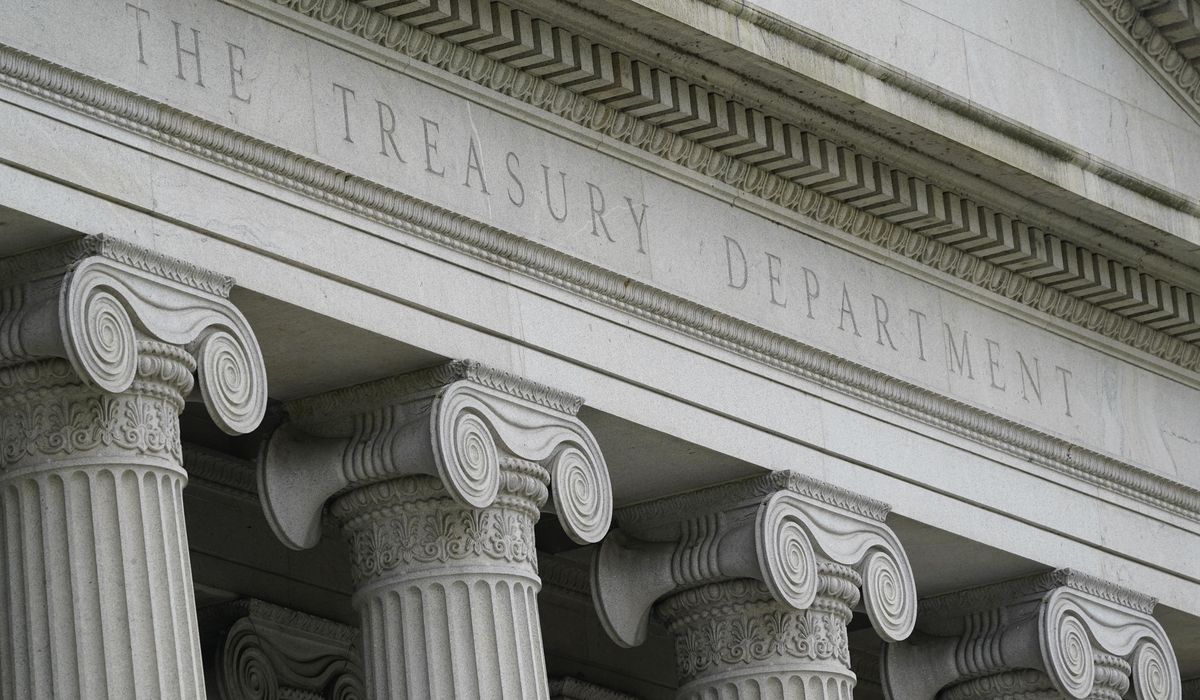The federal government has recorded a deficit of $1.7 trillion for the fiscal year, making it the third-largest deficit in history.

The Treasury Department announced that the federal deficit for the fiscal year 2023 reached $1.7 trillion. President Biden’s team attributed this increase to the 2017 tax cut package implemented by his predecessor.
If it wasn’t for the Supreme Court overturning Mr. Biden’s student loan forgiveness program, the deficit would have been even more severe, estimated at $2 trillion by the Congressional Budget Office. However, due to budget regulations, the cancellation of the program appeared as a savings of over $300 billion in this year’s calculation.
The government’s revenue amounted to $4.439 trillion, while its expenditures reached $6.134 trillion, resulting in a deficit of $1.695 trillion. This deficit is the third highest, surpassed only by the deficits of $3.1 trillion in 2020 and $2.8 trillion in 2021 during the initial years of the coronavirus pandemic.
Both spending and revenue have deteriorated. If it weren’t for the student loan issue, spending would have increased by approximately $200 billion.
However, what was even more surprising was a decrease in revenue, as the government collected approximately $450 billion less this year compared to the previous year.
Budget analysts have been trying to pinpoint reasons but Treasury Secretary Janet Yellen and White House budget director Shalanda D. Young said last year was a post-pandemic anomaly and revenue this year is what was expected “after the passage of the Tax Cuts and Jobs Act of 2017.”
“The main cause of the rise in the deficit as a percentage of GDP was the decrease in revenues. On the other hand, the increase in the deficit as a percentage of GDP was not significantly influenced by non-interest spending,” stated the two women in a joint statement, urging Congress to raise taxes.
Ms. Young expressed that Mr. Biden’s economic plan aims to create a growing economy that benefits the middle class.
The Defense Department’s expenditure exceeded $775 billion last year, which was approximately $50 billion higher than in 2022. Similarly, the Labor Department and Housing and Urban Development experienced significant transformations.
However, the most significant increase in expenses was observed in the interest payments made towards the national debt. This amount totaled $879.3 billion, marking a rise from $747.6 billion in the preceding year.
Social Security spending remains the single biggest line item in the budget, at $1.416 trillion — up from $1.282 trillion in 2022.
Budget analysts expressed concern about the troubling financial outlook in 2023. This is particularly worrisome because, despite the decrease in pandemic-related expenses and a surprisingly strong economy, the conditions should have been favorable for reducing the deficit.
However, when considering the student loan scenario, the deficit experienced a twofold increase between 2022 and 2023.
“I am witnessing firsthand the distressing convergence of increasing debt, inflation, and interest expenses, which ultimately result in further debt. Interest expenses surged by nearly 40% in the previous year, and it won’t be long before our interest payments surpass our national defense expenditure,” stated Michael A. Peterson, CEO of the Peter G. Peterson Foundation.
He stated that Congress must make significant progress on the matter.
The team of Biden emphasized that there has been some advancement already achieved.
They pointed to the debt deal Mr. Biden reached with then-House Speaker Kevin McCarthy this spring, which they said will lower projected deficits by $1 trillion over the next decade.
However, Mr. Biden is determined to reduce those savings.
Just hours prior to the release of the latest figures on Friday, the president submitted a fresh budget proposal to Congress, seeking $105 billion for urgent expenditures in the current year.
He did not propose implementing reductions to cover the expenses.

